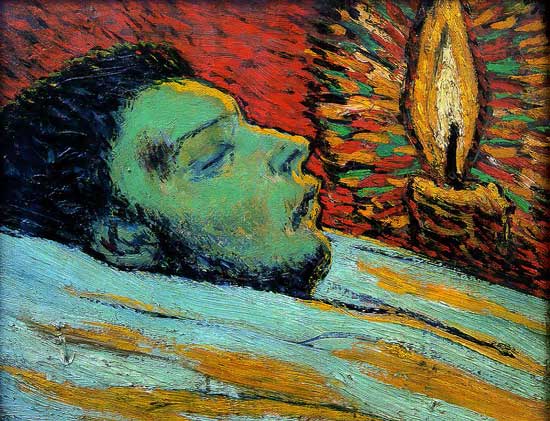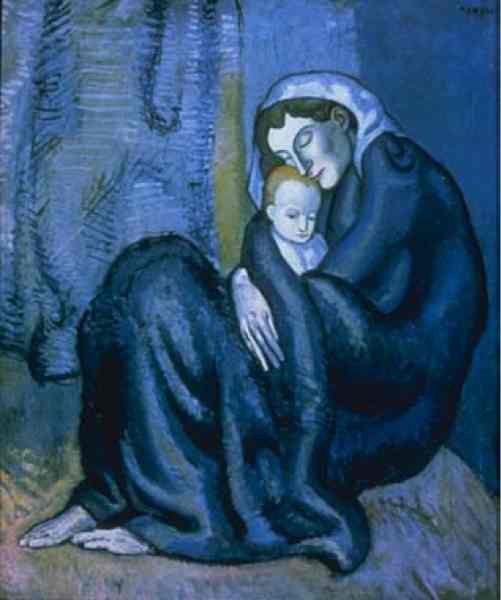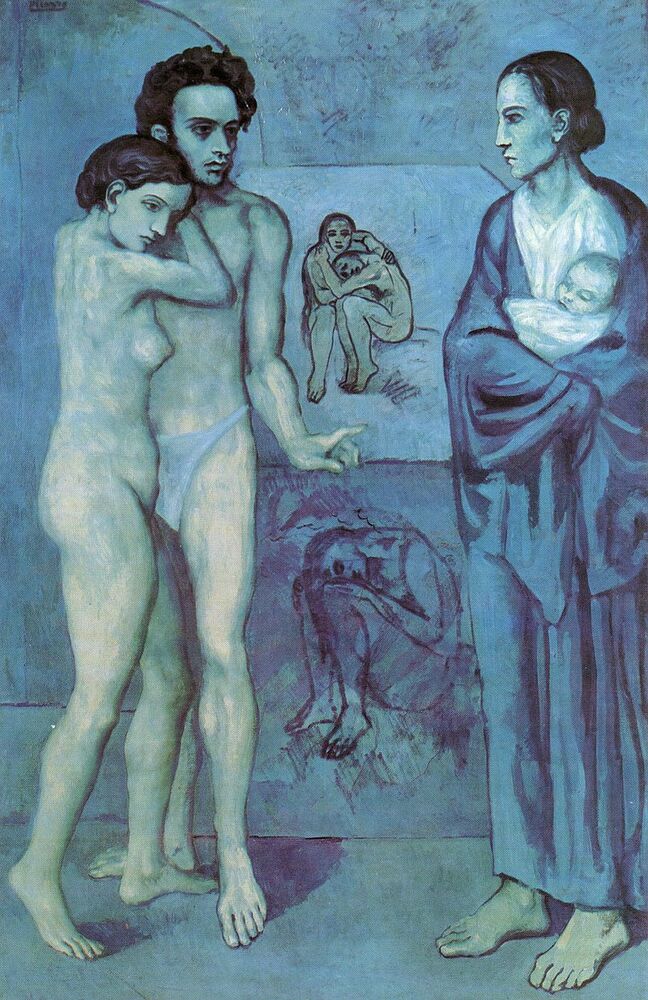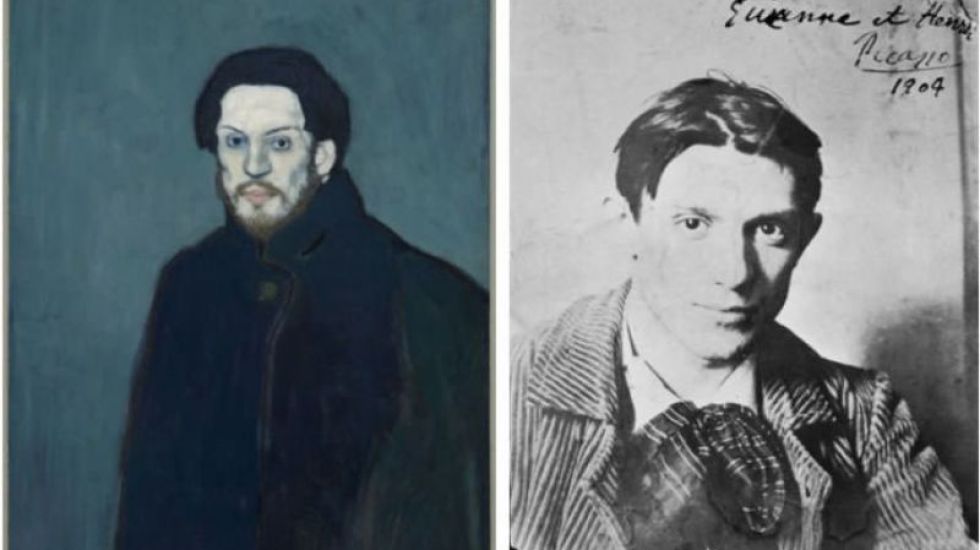This event was what brought Pablo into an unhappy vision of reality.
It is easy to envision an all-powerful Pablo Picasso – a painter who revolutionized art history while painting flamboyantly without any clothes on and confronting critics' queries by firing shots up in the air.
Nevertheless, it wasn't always so straightforward for this Spanish virtuoso. In fact, at the first stages of his career he encountered numerous desperate moments during his financial hardship as well tragedies that affected him emotionally.
Picasso, the blue period and a bad start
It all started in 1901 when Picasso was only 19. He had a group of friends who were composed of radical artists, writers and anarchists whom he met during his travels between Barcelona and Paris. His best pal was Carles Casagemas; sadly though their friendship ended on an unexpected note that year as the Spanish poet tragically committed suicide by shooting himself in the head while they were having dinner together due to a romantic heartbreak.
“It was thinking about Casagemas that made me start painting in blue,” Picasso would later confide to Pierre Daix, his friend and biographer.
This event caused a deep emotional impact on the artist, who felt an urge to paint about it. He started by using melancholy blues, dark grays and sickly greens - all colors that reflected his grief over the loss he was feeling at this time. One painting which came out as a result is known as 'The Death Of Casagemas (1901)'. It portrays the poet wrapped up in a white blanket with a cornflower green profile and what appears to be an almost peaceful resting face… but if you look closer, there is something more sinister hidden here; A bullet hole near where his temple would have been – presumably indicating how he passed away.
This artwork clearly speaks for itself when it comes to conveying some really complex emotions such as despair or guilt related to death, yet also offering hope through its beauty that somehow things can still go beyond sorrow into peace. In fact, one could argue that Picasso wanted us to ponder these questions while looking at this piece of art: What does tragedy mean? Is suicide ever justified? How do we cope with our losses?

Picasso blue period - The death of Casagemas 1901
Before Casagemas passed away, Picasso felt the numbing sadness of losing cherished people.
In 1895, his little sister Conchita died because of diphtheria and another one from Barcelona's artist group called Hortensi Guell actually leapt off a cliff in 1899. What worsened it for him is that he was knowledgeable about Vincent van Gogh committing suicide back in 1890 too. Academics believe these heavy brushstrokes with low toned hues by Pablo on "The Death Of Casagemas" were also an ode to the late Van Gogh himself.
Picasso was grieved by his sister's passing, the death of associates and an artist who inspired him. In early 1901 he still hadn't figured out how to make it as a painter nor had earned enough from art sales to provide for himself. All this caused Picasso immense distress and led him to believe that all those opposing the current mainstream in society live with tiresome lives only leading them towards tragic demise.

Picasso, Mother and Child - Blue period
Have you ever taken a negative view of something? Picasso captured this feeling perfectly in his 1901 self-portrait (the one on the left, in the image at the start of this article). Despite being only 20 years old when he painted it, Picasso depicts himself as thin and fragile - almost like someone twice his age. It's incredible to think what emotional depth was felt by him even then! From 1897, everything is a deeply lonely seascape where sky and water seem to merge in misery.
A range of deep blue saturates the figure as well as the backdrop he is standing before, his face colored in an icy light blue, jacket with a rich cobalt shade and eyes navy blue. This painting generally offers us with the sense of society's rejection of one who has been going through much pain - an artist.
Picasso using this specific type of color -blue-to express anguish or distress ties back to several sources such as Paul Gauguin’s work which delves into human destiny though art pieces filled up primarily by blues; like “Where are we going?" from 1897 that expresses extreme loneliness, yet it presents both sea and air merging signifying unimaginable sorrow.
Picasso's Attraction to Blue Period Subjects
The blue period of Pablo Picasso was marked by a lot of sadness and loneliness, in which cerulean blues and azures dominated the palette. So it makes sense that he found himself drawn towards stories by Romantic writers like Alfred De Vigny who featured protagonists with tragic destinies.
In his novella "Stello," for instance, we meet an artist favored by destiny but tormented inwardly - or as De Vigny put it, 'blue demons' - linked to moments of boredom. This idea resonated strongly with Picasso during this time; so much so that "The Left Behind" became one of his favorite subjects throughout the blue period – reflecting not only those dealing with mental anguish through artistic expression (like him) but also all kinds of people living life on its margins: sex workers, drunks, homeless folks…you name it!
If there’s anyone who could relate more than usual at these times when life is hard simply due to daily struggles, then surely it must have been someone going through their own personal ‘blue period’ too…
In works like "Mother and Her Daughter Next to a Fountain" (1901) and “Assoupi Drinker” (1902), Picasso focuses on the depiction of two abject, lonely women. The artwork was undoubtedly inspired by his visit to Saint-Lazare prison where most inmates struggle with venereal diseases. He captures their struggles in hunched bodies as well as blue-gray color palette; however he also adds an element of hope by dressing them up similar to Virgin Mary's cape.
Other paintings such as “Woman Who Irons” (1901) show characters stripped away from any luxuries doing mundane tasks
Art experts have hypothesized that Picasso may have created these pieces of art in reaction to an issue that was a major problem for him during his younger days: the mistreatment of working-class people throughout the Industrial Revolution.
The end of Picasso's Blue Period
In his best-known paintings from this time, commonly referred to as "the Blue Period", we still get a glimpse into how devoted he remained towards making artwork. “Life” (1903) brings us back to what it would be like inside an artist's studio. Could you imagine being there when Picasso made something so iconic? It must've been quite inspiring!

Picasso, Life or La vie, 1903 - Blue period best known artwork
Although earlier examinations of the painting's hidden layers revealed Picasso as its central figure, he ultimately chose to paint Casagemas in this way. He is nude with only a pair of underwear on and embraced by another naked woman while they gaze at a mother and her child. Behind them there are two canvases featuring figures folded up inside themselves.
Everything about the scene seems to evoke an image of vulnerability. What stories did these people have that lead them here? Why does Picasso show us such an intimate moment between strangers? We can never be sure, but it certainly sparks our curiosity!
The artist combines several aspects of his struggles in one painting: poverty, rejection, artistic anguish and the sorrow of lost souls like Casagemas. Interestingly enough, x-ray analysis uncovers that the canvas was painted over another piece called "Last Moments", which had been inspired by the death of Picasso's sister.
Maybe by putting all these hard times together, he was actually attempting to move on from mourning and out of his blue period. In fact, shortly after completing “Life” he relocated to Paris, bringing an end to what is known as 'the Blue Period' - a time replaced with lighting up roses.
Was this intentional? Maybe… Picasso's own words can explain it best, "Colors, like subjects, follow the rhythm of emotions". Well, that was true during Pablo Picasso's Blue Period.

